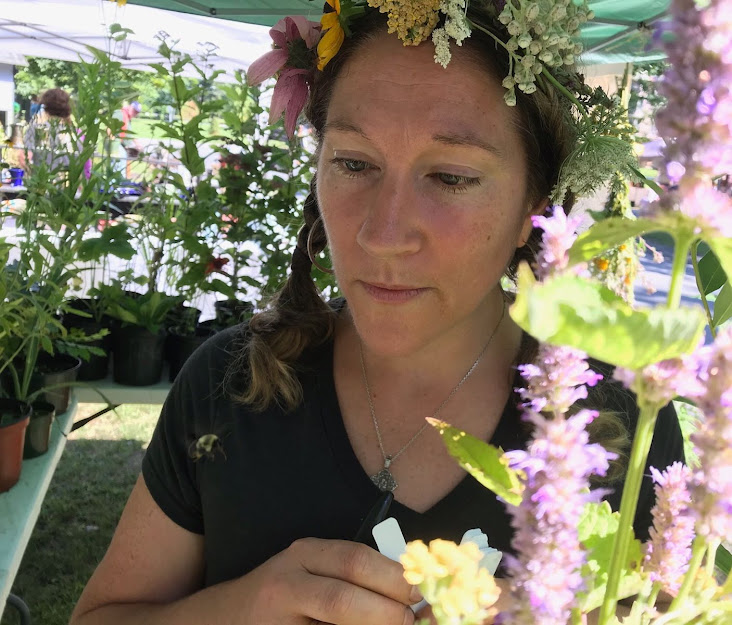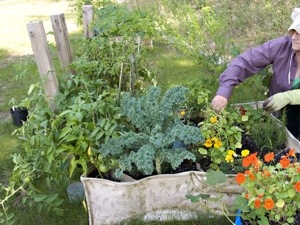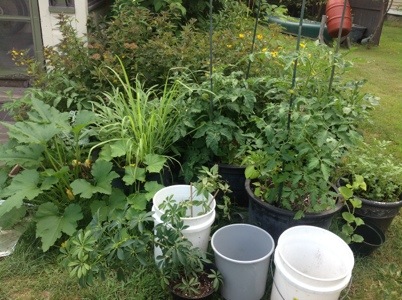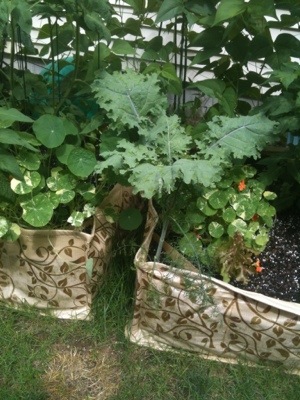Growing organic produce at home is fun and easy. The benefits of eating organic vegetables are immeasurable. In turn, it makes sense that more and more people are interested in eating healthy and having a direct hand in the food’s growing process. Trucking to the farmer’s market each week can be taxing on many folks’ schedules. With organic strategies and shortcuts, growing organic produce at home becomes stress-free. Homegrown vegetables and herbs should be easy and affordable.
Raised Beds.
We often encourage our clients to use a raised bed when planning an edible garden. This can potentially eliminate every issue imaginable, when combined with other organic methods. In raised beds we get absolute control over our soil content. We can add organic soils, decomposed manures and compost; when organic vegetable starts are plugged into this rich, nutrient dense stratum they blow up like the proverbial Beanstalk.
Vertical Gardening + Companion Planting.
Vertical gardening and companion planting are two other methods that facilitate successful raised bed edible gardening. When plants are allowed to grow up- to climb a trellis, ladder, soccer goal, wooden pallet or any strata that will house vertical growth- we get a larger net harvest. Because most annual vegetables just want to keep growing up.
Companion planting is the quintessential piece of organic garden planting strategy that makes edible gardening much easier. Time tested companion planting wisdom often prevents garden problems before they even surface; by attracting predator and pollinator insects that assist in vegetable plant’s safety and pollination. Many pungent herbs are a turn off for pest insects, for example, Borage and Nasturtium are necessary in companion planting. Both attract “good” insects and stave off pesty ones. There are other successful coupling models, like Tomatoes and Basil to name one couple. When planted in close proximity to each other, Basil protects Tomato plants from the dreaded Tomato Hornworm. The two plants also improve each other’s flavor. There are hundreds of similar relationships, learning about companion planting is strategically beautiful.





